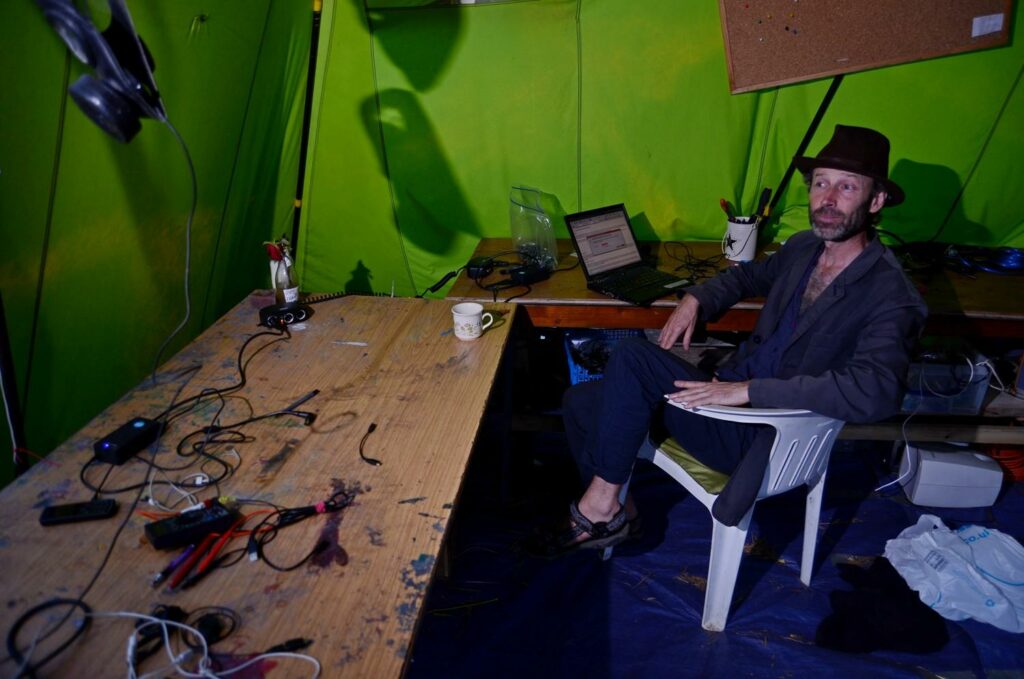
Hamish Campbell, the founder of #VisiononTV, began his journey into copyleft video through his project called #RoughCuts. In a recent interview, Campbell shared how RoughCuts started as one of the first copyleft video projects that encoded activist video in MPEG-1 format, an early standard format for video. He would burn CDs with an hour of different films and create a user interface using HTML to make it easy for people to watch them and screen them from their computers.
The CDs were sold for five pounds each, the project was designed to be a sustainable #DIY media distribution platform. People were encouraged to buy the CD, copy it, and give it away for free, and the revenue generated from the CD sales would help fund national screening tours, pay for travel expenses and equipment repair.
As the technology of the web advanced, people could watch videos online at a reasonable quality, which made the CDs obsolete. Hamish took a break from RoughCuts until the technology caught up a year or two later, and he started VisiononTV, a webTV project distribution platform for on-the-ground screenings. People could watch the videos on the web, but the primary focus was on taking the content offline and showing it on big screens to an activist community audience in the same room.
Hamish Campbell’s RoughCuts project was a pioneering effort in the field of copyleft video, which paved the way for his later project, VisiononTV. His approach of creating sustainable DIY media distribution platforms continues to inspire and influence media activists around the world.
An interview with Hamish Campbell on grassroots media and tech
Interviewer: Can you tell us about your project #RoughCuts and how it started?
Hamish Campbell: Before I did #VisiononTV, I started a project called RoughCuts, which was offline copyleft video. It was one of the first copyleft projects with video, encode in the MPEG-1 an early standard format for video, about VHS quality video. You could fit an hour on a cheap CD. I would burn these CDs with different films, and an interface to the front of it using an HTML page, so you put the CD in your computer, and this web page would pop up with a list of all the films with a bit of information and a link to play the film. Then I would copy these in a CD burner. I’d go around the country doing screenings and I would sell the CDs for five pounds if people wonted to support the project.
Interviewer: How did you fund national screening tours for Rough Cuts?
Hamish Campbell: I funded national screening tours by selling these CDs, which were available for free if people wanted to copy them. So, I said, buy the CD, then go home, and copy it and give it all to your friends. It was a take-it-away-and-distribute-it-yourself project. It was sustainable DIY media distribution, so the person who was doing it could be sustained and could actually make a little bit of money to travel around and pay the expenses, repair cameras, etc.
Interviewer: How did the technology change of the web impact RoughCuts?
Hamish Campbell: The technology of the internet moved on, so people actually could put video on the web and watch it on the online in reasonable quality. So then, why buy a CD? Why have a physical medium? It became an obsolete project. So then I kind of stopped doing that for a while, but then a year or two later, the web technology caught up, and it was really easy to do web video. So I thought, let’s do a webTV project distribution project for on the ground screenings, so people can watch on the web, but what it’s really about is taking it off the web and showing it on a big screen to a bunch of people in the same room. That’s how #VisiononTV came about.